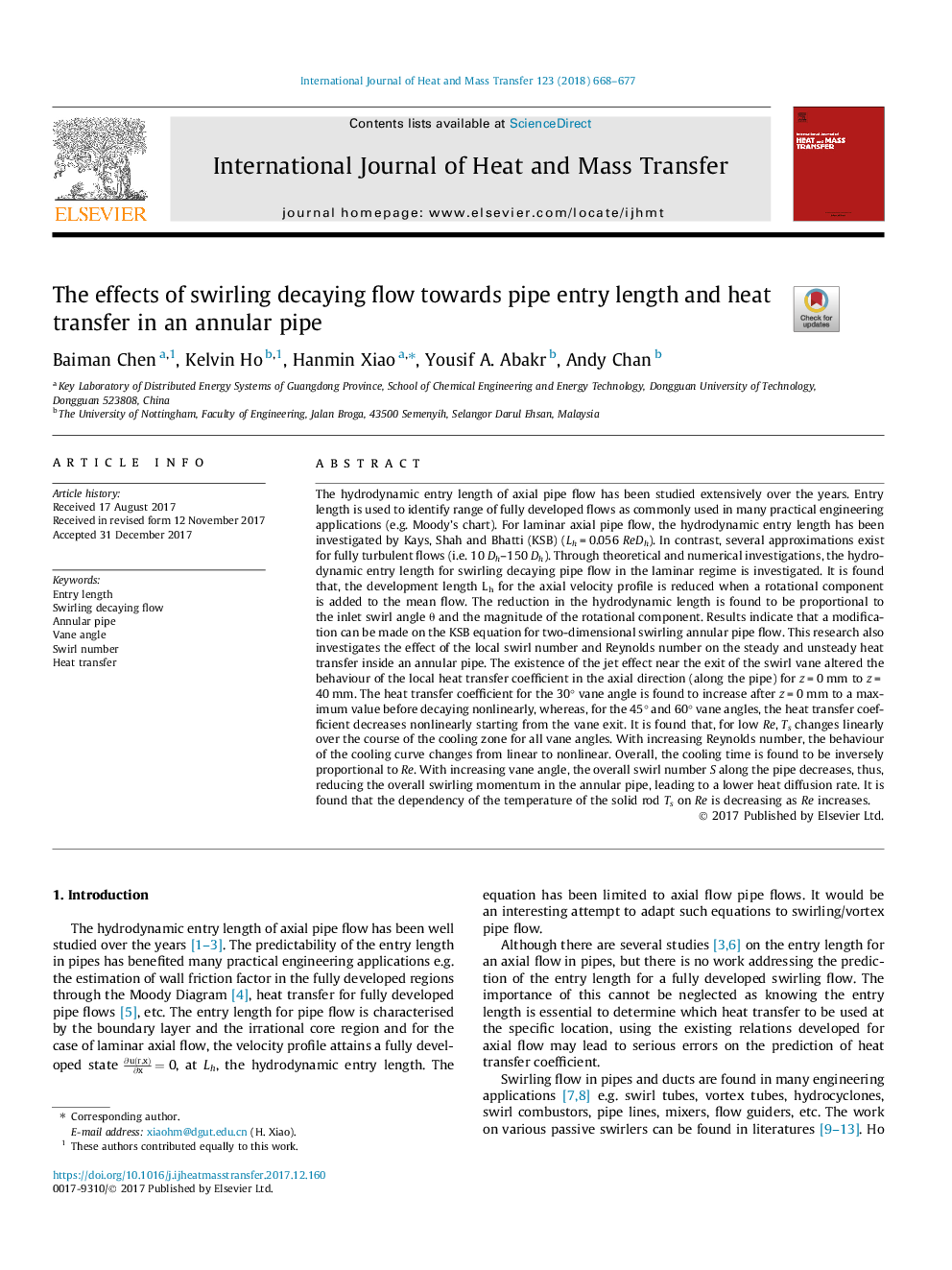| کد مقاله | کد نشریه | سال انتشار | مقاله انگلیسی | نسخه تمام متن |
|---|---|---|---|---|
| 7054294 | 1458017 | 2018 | 10 صفحه PDF | دانلود رایگان |
عنوان انگلیسی مقاله ISI
The effects of swirling decaying flow towards pipe entry length and heat transfer in an annular pipe
ترجمه فارسی عنوان
اثرات جریان متلاشی شدن در برابر طول لوله ورودی و انتقال گرما در یک لوله حلقوی
دانلود مقاله + سفارش ترجمه
دانلود مقاله ISI انگلیسی
رایگان برای ایرانیان
کلمات کلیدی
طول ورودی، جاروب شدن جریان فرسوده، لوله حلقه ای، زاویه ورق، شماره چرخش، انتقال گرما،
موضوعات مرتبط
مهندسی و علوم پایه
مهندسی شیمی
جریان سیال و فرایندهای انتقال
چکیده انگلیسی
The hydrodynamic entry length of axial pipe flow has been studied extensively over the years. Entry length is used to identify range of fully developed flows as commonly used in many practical engineering applications (e.g. Moody's chart). For laminar axial pipe flow, the hydrodynamic entry length has been investigated by Kays, Shah and Bhatti (KSB) (Lhâ¯=â¯0.056 ReDh). In contrast, several approximations exist for fully turbulent flows (i.e. 10 Dh-150 Dh). Through theoretical and numerical investigations, the hydrodynamic entry length for swirling decaying pipe flow in the laminar regime is investigated. It is found that, the development length Lh for the axial velocity profile is reduced when a rotational component is added to the mean flow. The reduction in the hydrodynamic length is found to be proportional to the inlet swirl angle θ and the magnitude of the rotational component. Results indicate that a modification can be made on the KSB equation for two-dimensional swirling annular pipe flow. This research also investigates the effect of the local swirl number and Reynolds number on the steady and unsteady heat transfer inside an annular pipe. The existence of the jet effect near the exit of the swirl vane altered the behaviour of the local heat transfer coefficient in the axial direction (along the pipe) for zâ¯=â¯0â¯mm to zâ¯=â¯40â¯mm. The heat transfer coefficient for the 30° vane angle is found to increase after zâ¯=â¯0â¯mm to a maximum value before decaying nonlinearly, whereas, for the 45° and 60° vane angles, the heat transfer coefficient decreases nonlinearly starting from the vane exit. It is found that, for low Re, Ts changes linearly over the course of the cooling zone for all vane angles. With increasing Reynolds number, the behaviour of the cooling curve changes from linear to nonlinear. Overall, the cooling time is found to be inversely proportional to Re. With increasing vane angle, the overall swirl number S along the pipe decreases, thus, reducing the overall swirling momentum in the annular pipe, leading to a lower heat diffusion rate. It is found that the dependency of the temperature of the solid rod Ts on Re is decreasing as Re increases.
ناشر
Database: Elsevier - ScienceDirect (ساینس دایرکت)
Journal: International Journal of Heat and Mass Transfer - Volume 123, August 2018, Pages 668-677
Journal: International Journal of Heat and Mass Transfer - Volume 123, August 2018, Pages 668-677
نویسندگان
Baiman Chen, Kelvin Ho, Hanmin Xiao, Yousif A. Abakr, Andy Chan,
